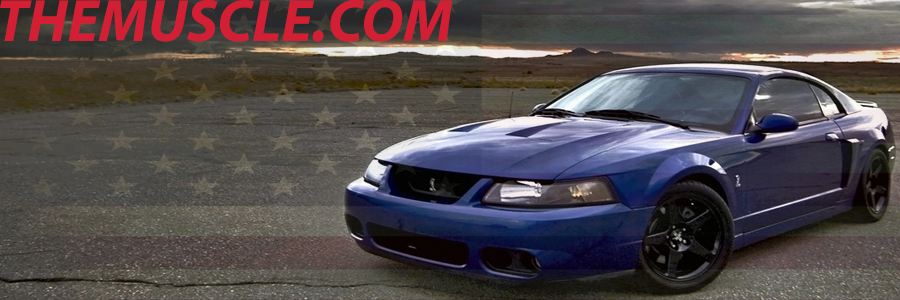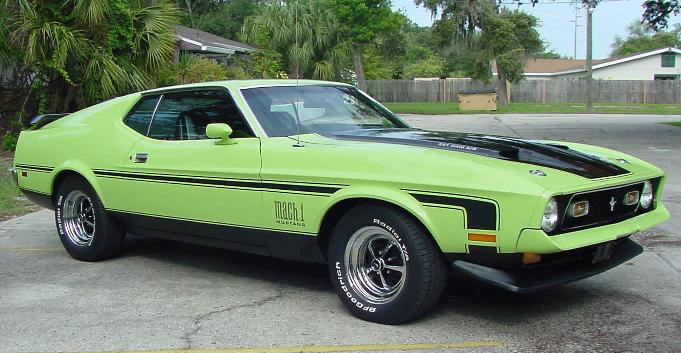
| Home | Mustangs | Years of Mustangs | Parts | Car Shows |
| Home |
| Car Of Weeks |
| Pictures |
| Contact |
| Sponsors |

1964 1/2 Ford Mustang
Standard Coupe: 92,705 units
Standard Convertible: 28,883 units
Total Production: 121,538 units
Retail Price: $2,320 Standard Coupe
Retail Price: $2,557 Standard Convertible
The first Ford Mustang rolled off the assembly line on March 9, 1964. On April 17, 1964, the Mustang was introduced to the public at the World’s Fair in New York. Before the day was over, Ford had secured 22,000 orders for the vehicle at dealerships across the country. As such, the Mustang was considered an instant hit with consumers. Contrary to popular belief, the first model year for the Ford Mustang was 1965. Mustangs produced between March 9th and July 31st of 1964 are often coined the 1964 ½ Ford Mustang by enthusiasts. Initial production of the second round of Mustangs began on August 17th, 1964. Both the original production Mustangs and the second run are technically considered 1965 Mustangs by Ford. That’s not to say there aren’t differences between the two. The first Mustangs produced feature unique characteristics that set them apart from those produced after July 31st, 1964.

Specifications
Engines: ohv V-8; Boss 302: 302 cid (4.00 x 3.00), 290 bhp; Boss 429: 429 cid (4.36 x 3.59), 360/375 bhp
Transmission: 4-speed manual
Suspension front: upper arms, strut-stabilized lower arms, coil springs, anti-sway bar
Suspension rear: live axle, leaf springs, anti-sway bar (429)
Brakes: front discs/rear drums
Wheelbase (in.): 108.0
Weight (lbs.): 3,210+
Ford built the 1969 Ford Mustang Boss 302 on its own, without outside help but following a Kar Kraft prototype, sending the result to showrooms in March 1969. Car and Driver called it "easily the best Mustang yet ... the best handling Ford to ever come out of Dearborn." Road & Track later described a Boss 302 as "delightfully sporting when driven hard. "Priced at a more modest $3,588 (nearly $1,000 higher than a base Mustang), the Boss 302 wore a deeper front "chin" spoiler than its big-block counterpart and could be ordered with an adjustable wing rear spoiler for $19. High-back bucket seats added $84. Distinctive rear-window louvers ($128), hinged at the top, helped give the smaller Boss a look all its own.

1971 Mach 1
While the redesign of the Mustang wasn’t a complete departure from its predecessors, the new models were significantly heavier in addition to being dimensionally bigger. The hardtop model was nearly 200 pounds heavier than the 1970 Mustang. Especially when coupled with the larger engines, this produced a fuel inefficiency that was quickly going out of style. As for engines, the base model was upped to a 250 cubic inch six-cylinder, which now produced 145 horsepower, as opposed to the 155 horsepower rating the same size had received in previous years. A 302 cubic inch 2-barrel engine was still the base V-8, though gone was last year’s 4-barrel Boss version specific to the Boss 302 model, which was also discontinued for 1971. Three versions of the 351 cubic inch engine were available, including one specific to the new Boss 351 Mustang, and horsepower for these ranged from 240 to 330. Finally, just as they were in 1970, two 429 cubic inch V-8s were available, one producing 360 horsepower and the other, with Dual Ram Induction, producing 370. Visually, the Mustang now came with concealed windshield wipers as well as additional chrome around the fenders. The inside came with a redesigned dashboard with larger gauges and standard high back seats. Though Mustang was still the top seller of all the pony cars like it had been every year, it continued to follow the trend of declining sales seen by both pony cars and muscle cars in 1971. Mustang production totaled 149,628, down 24 percent from the previous year.